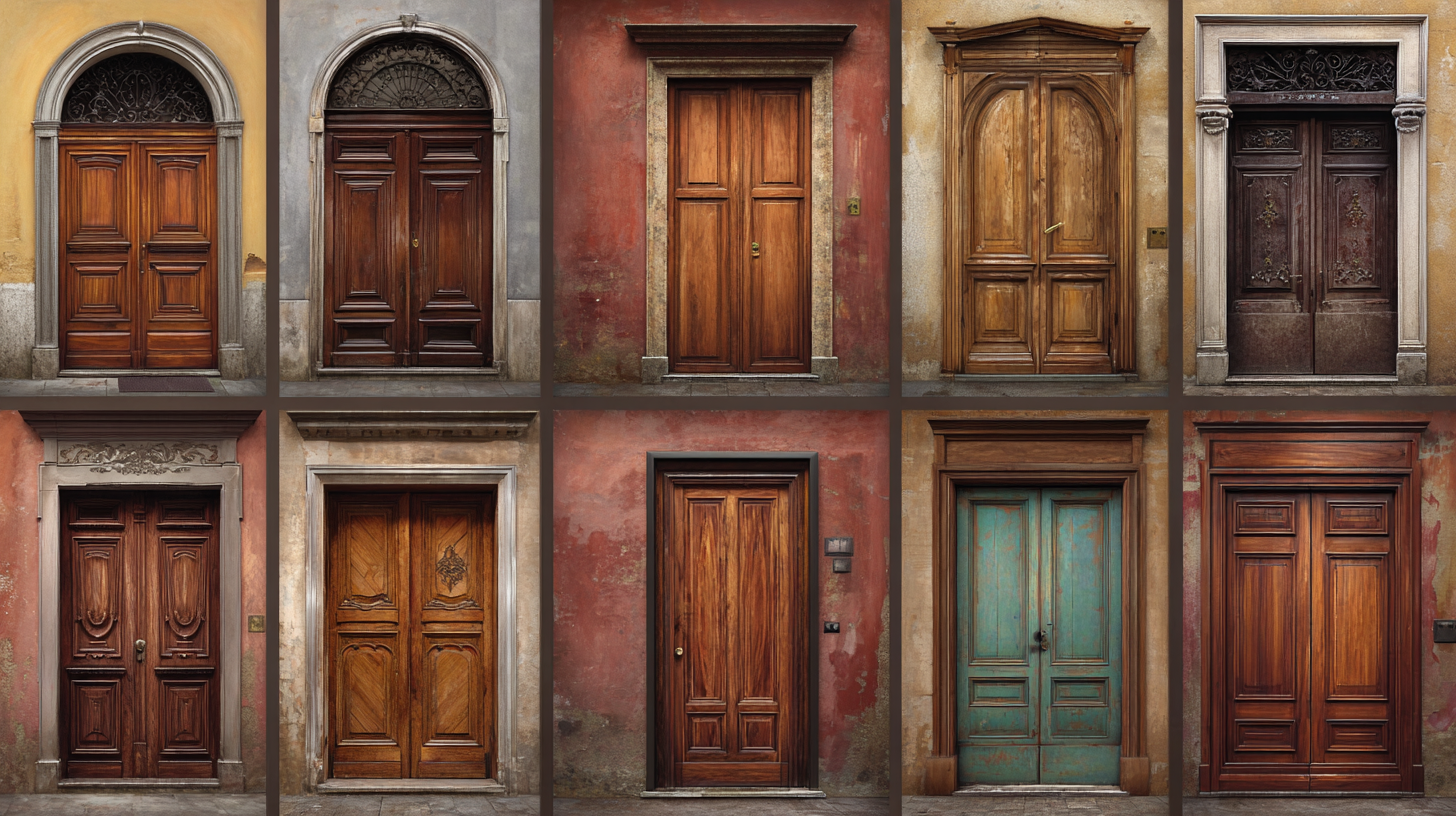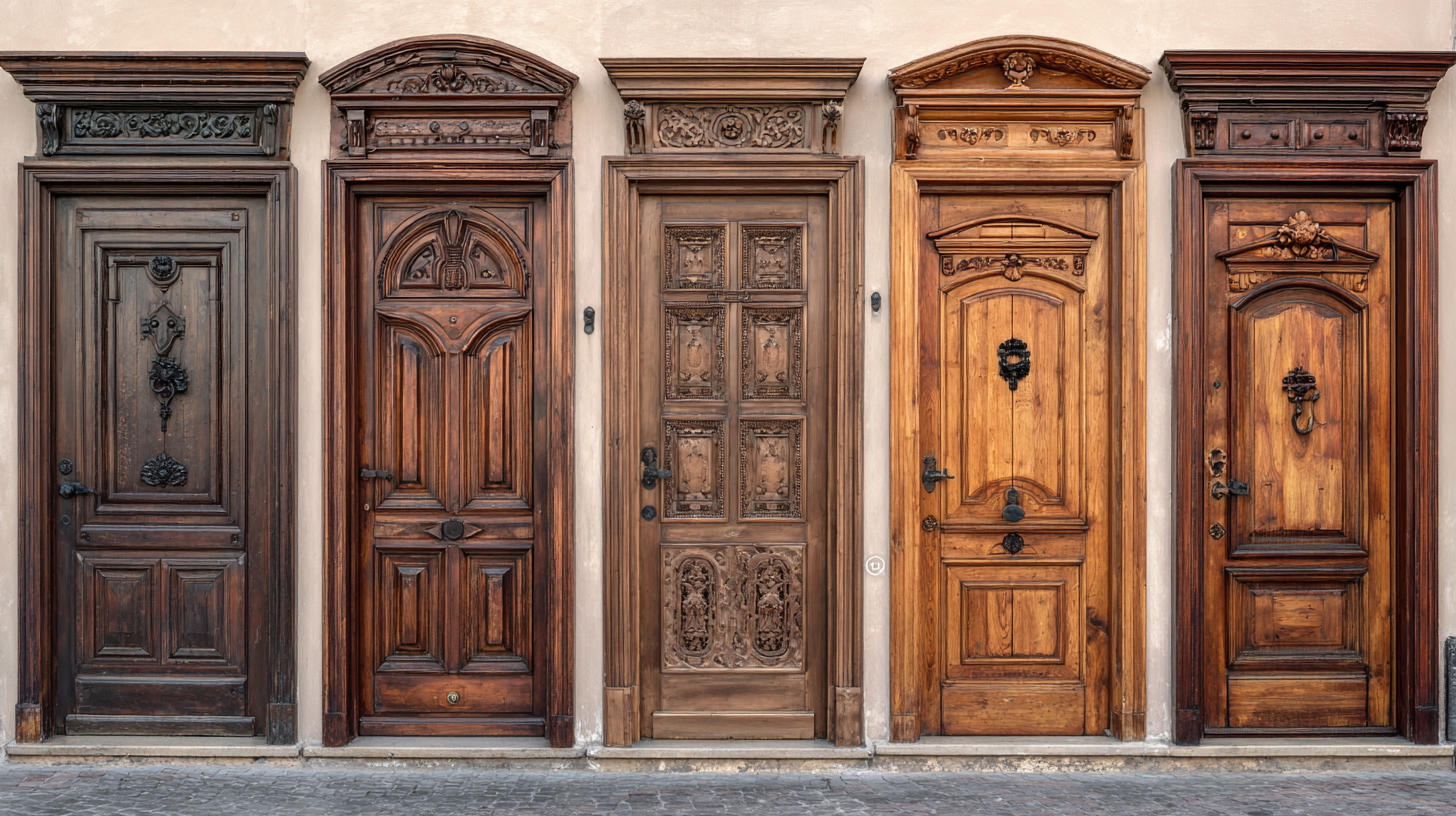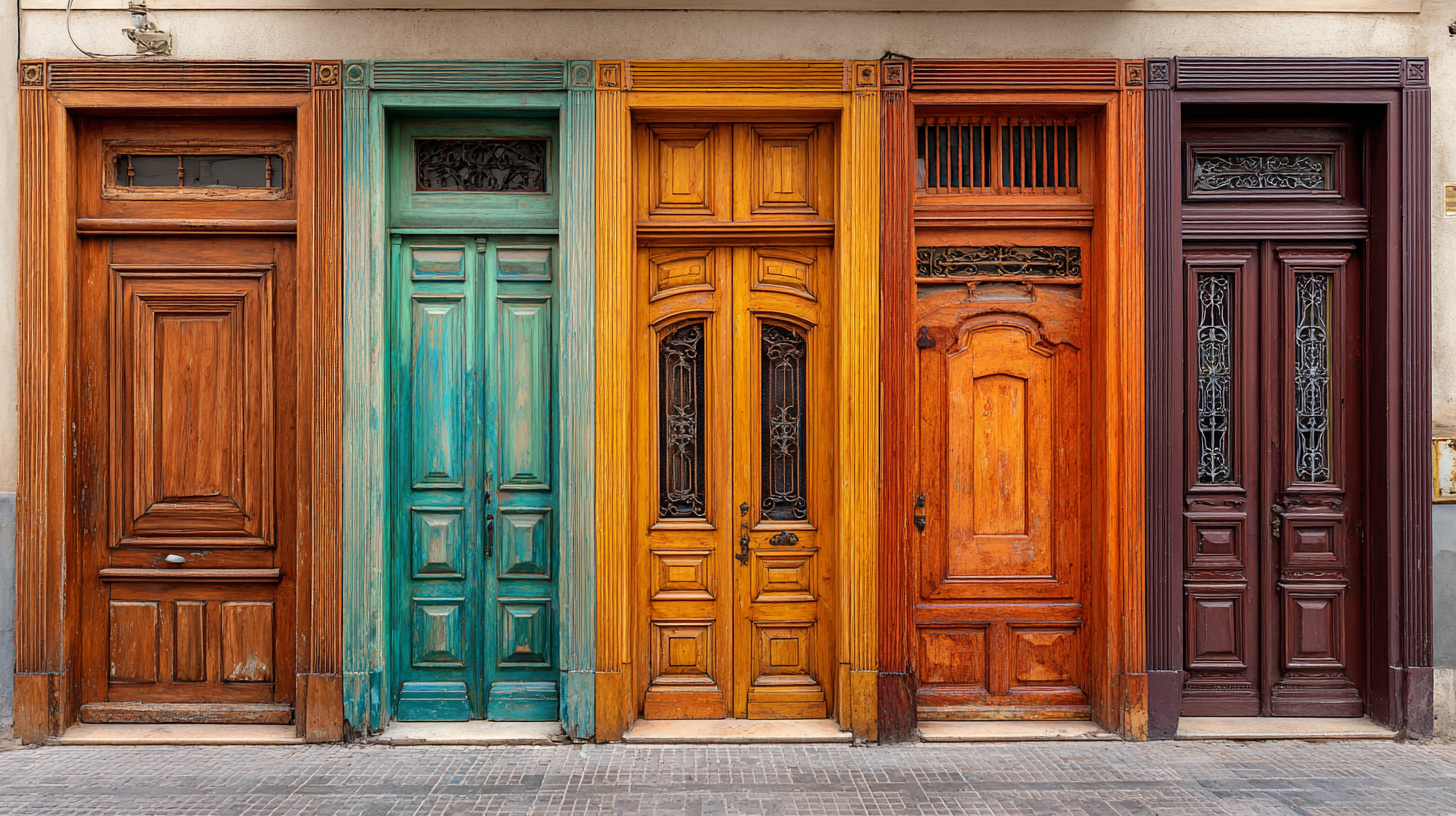
- English
- Español
- Português
- русский
- Français
- 日本語
- Deutsch
- tiếng Việt
- Italiano
- Nederlands
- ภาษาไทย
- Polski
- 한국어
- Svenska
- magyar
- Malay
- বাংলা ভাষার
- Dansk
- Suomi
- हिन्दी
- Pilipino
- Türkçe
- Gaeilge
- العربية
- Indonesia
- Norsk
- تمل
- český
- ελληνικά
- український
- Javanese
- فارسی
- தமிழ்
- తెలుగు
- नेपाली
- Burmese
- български
- ລາວ
- Latine
- Қазақша
- Euskal
- Azərbaycan
- Slovenský jazyk
- Македонски
- Lietuvos
- Eesti Keel
- Română
- Slovenski

Ultimate Checklist for Sourcing the Best Wooden Doors for Your Global Projects
In the realm of construction and renovation, the choice of materials plays a crucial role in determining the quality and aesthetics of a project. Wooden doors, often regarded as a symbol of sophistication and durability, are increasingly favored for both residential and commercial applications.
According to the Global Wooden Doors Market report, the compound annual growth rate (CAGR) for this sector is expected to reach 6.1% by 2026, driven by rising demand for sustainable and eco-friendly building materials. Moreover, statistics indicate that wooden doors account for approximately 30% of the total door market, underlining their significance in architectural design.

This ultimate checklist aims to guide project managers and builders through the essential considerations for sourcing the best wooden doors, ensuring a blend of functionality, style, and sustainability in global projects.
Examining Common Issues in Sourcing Wooden Doors for Global Projects
Sourcing wooden doors for global projects can be a complex endeavor fraught with various common issues. One significant challenge is the inconsistency in quality across different suppliers and regions. Variations in wood treatment processes and seasonal availability can lead to discrepancies in durability and finish. It’s essential for project managers to establish clear quality standards and conduct thorough inspections or audits of potential suppliers. By doing so, they can mitigate the risks associated with receiving subpar materials that could jeopardize the entire project.
Another common issue is compliance with international regulations and standards. Each country has specific building codes and environmental regulations that must be adhered to when sourcing materials. Failure to comply can result in costly delays and legal ramifications. It’s crucial to stay informed about the latest regulations and work closely with suppliers who have a proven track record of compliance. This not only ensures that your wooden doors meet all necessary regulations but also enhances the sustainability of your project by promoting environmentally friendly practices in sourcing and production.
Wooden Doors Sourcing Issues
Impact of Climate and Regional Variations on Wooden Door Quality
When sourcing wooden doors for global projects, understanding the impact of
climate and regional variations is crucial for ensuring quality and durability.
Different climates can significantly affect the physical properties of wood,
such as moisture content, density, and susceptibility to pests. For instance, in humid environments, wood may absorb excess
moisture, leading to warping or fungal growth. Conversely, in
arid regions, excessive dryness can cause __cracking__ and shrinkage. Therefore, it's essential to select wood species that
are naturally resistant to these climatic challenges.
Additionally, regional variations in wood sourcing practices and processing methods play a vital role in the final product's
quality. Local expertise, availability of certain wood types, and adherence to sustainable forestry practices can greatly
influence the performance of wooden doors.
For example, regions known for high-quality hardwoods, like
oak or mahogany, may offer doors that not
only meet aesthetic standards but are also engineered to withstand local climatic conditions. Engaging with local suppliers
who understand these nuances can lead to better sourcing decisions
and final products that endure varying environmental stresses effectively.
Understanding the Importance of Certification in Sustainable Wood Sourcing
When sourcing wooden doors for global projects, one of the most significant considerations is the
certification of the wood itself. According to a report from the
Forest Stewardship Council (FSC), approximately
30% of global forests are managed under certification schemes aimed at promoting
sustainable forestry practices. This statistic highlights the critical role certifications play in ensuring that wood
is responsibly sourced, thereby mitigating the impact on deforestation and biodiversity loss.
Furthermore, certified wood often meets rigorous environmental standards which can enhance the marketability of projects.
A study by the World Business Council for Sustainable Development (WBCSD) indicates
that companies utilizing certified materials can experience a
20% reduction in their environmental footprint. This reduction
is particularly relevant in today's market, as consumers increasingly prefer products that are
ethically sourced. Therefore, investing in certified sustainable wood not only
supports global ecological efforts but also aligns with consumer demand for sustainability,
making it a wise choice for any international venture aiming for longevity and ethical integrity.

Evaluating Cost vs. Quality: The Trade-offs in Global Wooden Door Procurement
When sourcing wooden doors for global projects, understanding the balance between cost and quality is essential. According to a report by the Wood Products Manufacturers Association, the international wooden door market is projected to grow by 4.6% annually, indicating a robust demand. However, with this growth comes the challenge of navigating the trade-offs. Cheaper options may seem attractive upfront, but they often compromise durability and aesthetics, leading to greater long-term costs.
Tip 1: Conduct thorough research on suppliers' reputations and product reviews. Look for certifications like FSC (Forest Stewardship Council) to ensure sustainable practices, which can enhance both quality and brand image.
Additionally, consider the materials used in construction as they directly impact longevity and performance. For instance, solid wood doors offer superior insulation and soundproofing compared to hollow-core alternatives. A 2022 analysis from the International Door Association found that homeowners are willing to spend an additional 15% on high-quality doors, reflecting a growing trend toward investing in lasting value rather than short-term savings.
Tip 2: Establish clear specifications for your project to communicate your desired balance between cost and quality effectively. This includes the type of wood, finish, and any custom features that elevate the door's functionality and aesthetic appeal.
Ultimate Checklist for Sourcing the Best Wooden Doors for Your Global Projects
| Dimension | Value | Cost ($) | Quality Rating (1-10) |
|---|---|---|---|
| Material Type | Mahogany | 500 | 9 |
| Thickness | 1.75 inches | 450 | 8 |
| Finish Type | Varnish | 600 | 8 |
| Supplier Distance | 1,000 miles | 700 | 7 |
| Customization Options | Available | 550 | 9 |
Strategies to Overcome Supply Chain Disruptions in Wooden Door Sourcing
When sourcing wooden doors for global projects, supply chain disruptions are a major hurdle that professionals must navigate. To address these challenges, implementing a robust risk management strategy is essential. Begin by diversifying your supplier base; relying on multiple suppliers from different geographical locations can mitigate risks associated with natural disasters, political instability, or economic fluctuations. Additionally, establishing strong relationships with local suppliers can enhance your flexibility and responsiveness in times of disruption.

Another effective strategy is to invest in technology that streamlines the supply chain. Utilizing advanced software for inventory management and demand forecasting allows you to anticipate shortages or delays. This proactive approach enables you to make informed decisions, such as adjusting orders or finding alternative materials when necessary. Regular communication with all stakeholders in your supply chain also fosters transparency and facilitates quicker problem resolution, ensuring that your wooden door sourcing remains on track despite any global challenges.